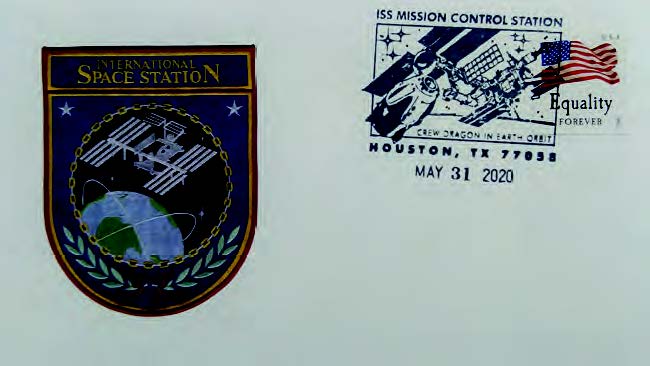

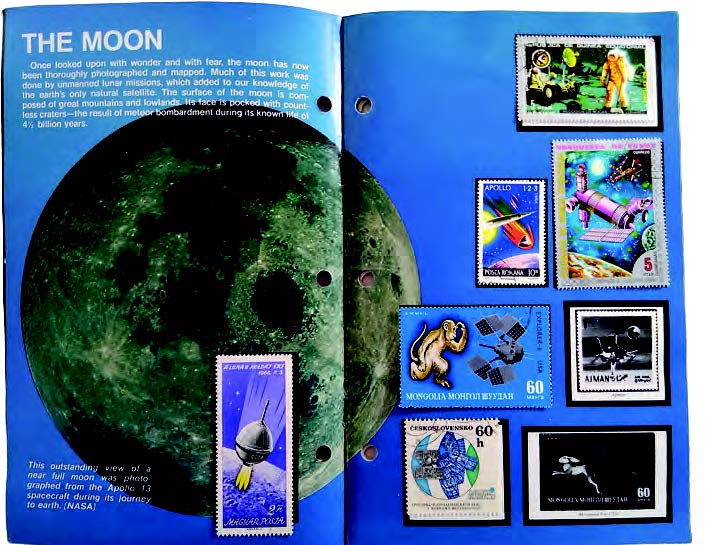
Philately is a new interest of mine, for no real reason than that I had not given it much attention before. My ignorance on the subject changed around five years ago when I was admiring a few first day covers that my father had: a keen stamp collector, he has amassed thousands of stamps over the years. I had just completed a GCSE in astronomy via evening classes; with my curiosity piqued, I started to wonder what astronomy- and space-themed stamps were out there.
I have been interested in astronomy since I was a teenager – seeing Saturn through a telescope, its rings clearly visible, is an image that I have never forgotten. At that time, in the late 1990s, I was lucky enough to see some fantastic astronomical events including Comet Hale-Bopp and the solar eclipse of 1999. Some of my most cherished memories involve standing outside and looking up.
My philatelic collection has grown hugely in these five years, from focusing solely on UK issues of astronomy-themed stamps to now owning a substantial amount of global philatelic material. Just this morning two more packages plonked onto my doorstep! This time, a hefty envelope from Maryland USA containing covers commemorating the launch of SpaceX Demo 2 and another from Cambridge which included a rather fantastic space stamp album from 1974. Fellow philatelists and astronomers all over the world selflessly indulge me in my passion of collecting astronomy- and space-themed stamps, first day covers and other items.
Astronomy and space have long been commemorated on stamps and other philatelic material. In fact, the first astronomy stamp dates as far back as 1887, when Brazil issued a stamp depicting Crux Australis, the Southern Cross. What follows is a short cosmic journey of a small sample of my collection interwoven with the moments in history that inspired them, starting with Apollo and concluding with the detection of ripples in the fabric of space-time from the outer reaches of the Universe.
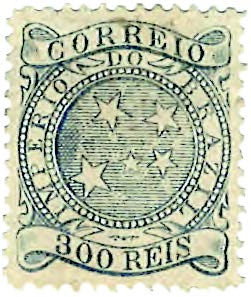
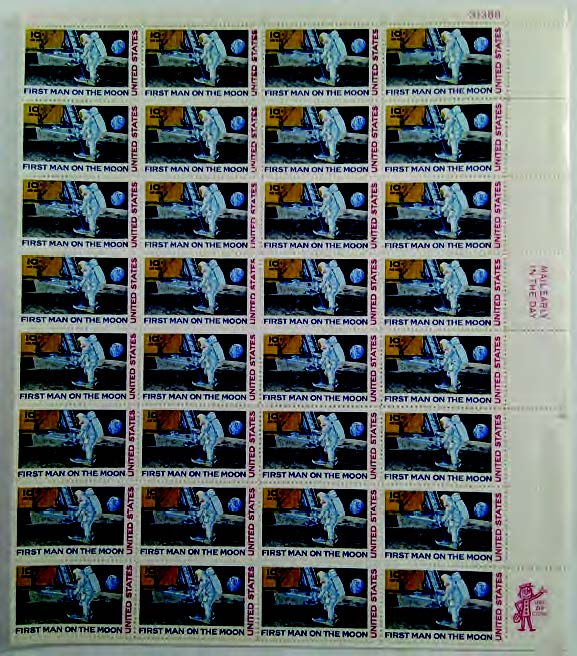
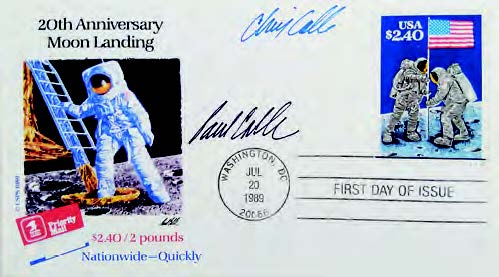
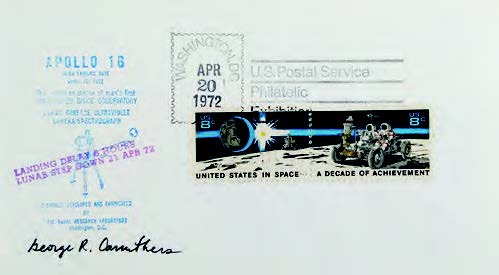
We Came in Peace for All Mankind
I have been incredibly lucky to receive some fantastic Apollo memorabilia from philatelists in America, including a mint stamp sheet of 32 ten cent stamps that were issued on 9th September 1969, depicting Neil Armstrong disembarking from ‘Eagle’, the Lunar Module. The stamp was designed by Paul Calle, one of NASA’s first eight space artists. The engraving plate used for the stamp was flown to the Moon aboard Apollo 11.
Fast forward twenty years later to 20th July 1989. Paul Calle was asked to design the cachet for the first day cover celebrating the twentieth anniversary of the Moon landing while his son, Chris, designed the $2.40 stamp illustrating Aldrin and Armstrong deploying the flag on the Moon. I have one of these covers in my collection which has been autographed by them both.
The Apollo programme ran for 11 years from 1961 to 1972 and in that time NASA successfully landed man on the Moon six times. An interesting autographed cover that I have commemorates the Apollo 16 mission. The aim of the mission was to survey, collect samples, deploy and activate surface experiments on the Moon’s surface. George Carruthers, an African American space scientist, invented the ultraviolet camera/spectrograph which was deployed on the surface of the Moon during the mission. This was the first Moon-based space observatory. Signed by Carruthers, the cover is date-stamped 20th April 1972, the date Apollo 16 astronauts Charles Duke and John Young landed on the Moon.
Last year stamps and covers were issued all over the world to mark the 50th anniversary of the Moon landing. Aside from philatelic material, I have been sent some wonderful items including a challenge coin made by Military Coins USA. Made from brass and coloured enamel, the design on the coin illustrates the original Apollo 11 mission patch and depicts an Eagle, the national symbol of the US, clutching an olive branch. On the reverse the coin is struck with the three names of the astronauts, Buzz Aldrin, Neil Armstrong and Michael Collins, along with the date Aldrin and Armstrong landed on the Moon. Four symbols including the NASA logo and the pin given to astronauts when they are accepted into the astronaut corps feature on the coin.
This challenge coin nicely complements a lightweight Apollo 11 silver-coloured token that I received. Unfortunately, I do not know much about the background of this token other than that it dates back to 1969, but I find the small circular token a perfect example of how coins and stamps can provide an insight into space history through simple images and just a few words.
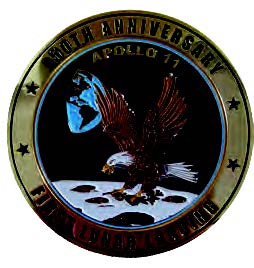
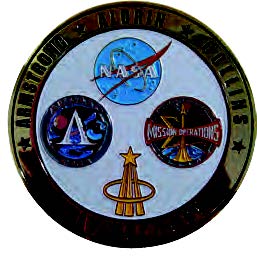
A weighty brass and enamel challenge coin was produced in 2019 to commemorate the 50th anniversary of the Moon landing.
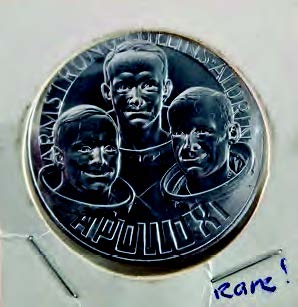
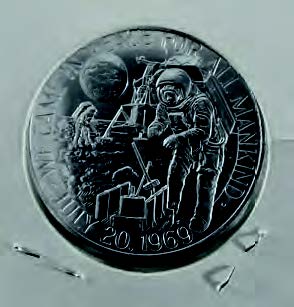
A silver ‘token’ was made to commemorate the Moon landing in 1969. One side of the token illustrates astronauts Armstrong, Aldrin and Collins whilst
the opposite side displays the text ‘We Came in Peace for All Mankind’.
The Hubble Space Telescope
In 1990, the Hubble Space Telescope (HST) launched from the Kennedy Space Centre in Florida aboard the orbiter Discovery; the telescope’s launch was the 35th mission of the space shuttle program and massively transformed our understanding of the Universe and our place within it. Orbiting 340 miles above the Earth, the telescope has discovered moons orbiting Pluto, collected data about galaxies and even contributed data for research on black holes. The HST celebrated its 30th anniversary on 24th April this year.
On 11th February 1997 seven crew members were launched aboard Discovery to undertake repairs and upgrades of the HST. This was the 82nd mission of the space shuttle program. Four covers in my collection have been signed by four of the five Mission Specialists – Joseph Tanner, Mark Lee, Steven Smith and Steven Hawley. Mark Lee and Steven Smith carried out three of the five EVAs (Extra Vehicular Activity) while Gregory Harbaugh, also a Mission Specialist, and Joseph Tanner undertook the other two. Steven Hawley, an already accomplished astronaut, was part of STS-31, the mission that launched the HST in 1990.
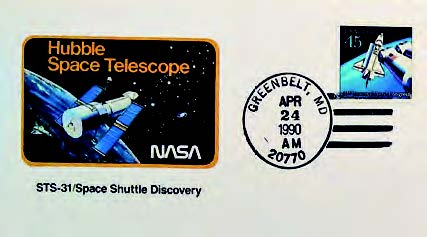
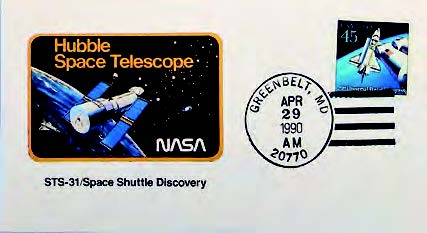
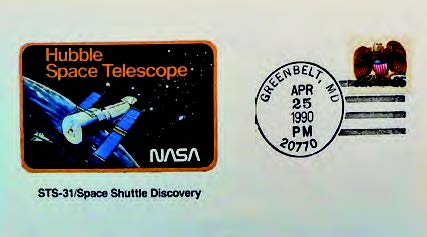
Three covers in my collection provide an interesting insight into three key dates of Hubble’s existence; : April 24, 1990, the date of orbiter Discovery’s launch; April 25, 1990, the date that the telescope was deployed; and April 29, 1990, the date that Discovery touched back down to Earth.
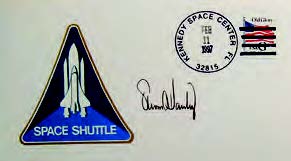
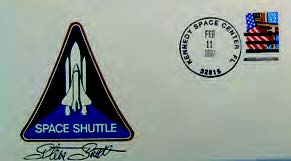
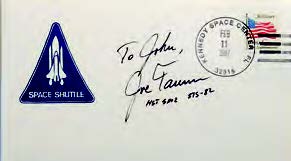
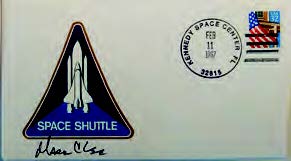
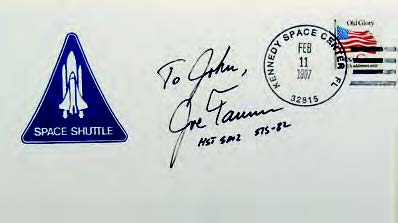
On February 11, 1997, seven crew members were launched aboard Discovery to undertake repairs and upgrades of the Hubble Space Telescope. Four covers have been signed by the crew.
Comets and Asteroids
Comets have been the cause of fascination and fear for centuries and their appearance has often been commemorated philatelically. Comet Kohoutek is perhaps best remembered as the comet that never was. The long period comet was hyped to be the comet of the century but unfortunately, it was not to be. Discovered in 1973 by Luboš Kohoutek, a Czech astronomer, the naked eye comet largely disintegrated upon its approach to the Sun hence it was not as bright as expected. It will make its next approach to Earth in 75,000 years.
There are plenty of covers available marking the occasion but no stamps to my knowledge. A home-made cover in my collection celebrates the closest approach of the comet to Earth and is signed by Kohoutek. A stamp of Copernicus, the famous 15th century astronomer, is affixed to the cover and it has been date stamped 15th January 1974, the date of the comet’s closest approach to Earth.
NASA launched Skylab in the 1970s and operated between 1973 and 1974. It was America’s first space station. The crew of Skylab 4 were tasked with observing comet Kohoutek using the on-board solar observatory. A photograph from Skylab’s white light coronograph experiment which shows the comet taken on 27th December 1973, 106 million miles from Earth, forms a wonderful addition to my collection.
Named after the famous astronomer Edmond Halley, Halley’s comet is perhaps the most famous short period comet in our history due to its return period of 76 years. Some of us may even see it twice in our lifetimes. The comet has been recorded as far back as 240 BC in China and was embroidered onto the world-famous Bayeux Tapestry.
The appearance of Halley’s comet in 1985 was celebrated globally on stamps, and here in the UK the Royal Mail issued a fantastic set of four stamps in 1986 which were illustrated by the famous cartoonist, Ralph Steadman. The stamps are colourful and imaginative. They depict a rather disgruntled but comical-looking Halley; an image of two comets to represent seeing it twice in a lifetime; and Giotto and the comet orbiting the Sun. Ian Ridpath, amateur astronomer and keen philatelist, signed a first day cover issued by Benham when we met at the Cardiff Astronomical Society in 2019.
A set of first day covers that I enjoy collecting are those that were issued by Presentation Philatelic Services, London between (from what I gather) 1984 and 1995. Research on this wonderful collection has proven to be fruitless for me and I know little about the history or thought behind them, but it is my aim to one day own the complete series. The card inlay does explain however that each issue depicts a fine art painting or other collectable auctioned by Sotheby’s of London.
The first day cover issued to commemorate the Halley’s comet stamp set is number 19 in the 1986 series. A beautiful silk cachet of a portable refracting telescope manufactured by Peter Dolland, well-known maker of optical instruments, adorns the cover. The telescope was sold by Sotheby’s at auction in 1985 for £22,000.
It is 25 years this year that Hale-Bopp was discovered. Moving across our skies for approximately 18 months, Hale-Bopp was the most observed comet of the 20th century. Discovered independently by Alan Hale and Thomas Bopp in the United States on 23rd July 1995, the comet passed perihelion on 1st April 1997, and shone bright at magnitude of +2. Even in light polluted towns and cities, it was visible to the naked eye.
Very few stamps were issued to celebrate this exciting event, but in my collection I have a homemade cover commemorating the comet, sent to me by a former NASA employee who specialises in making his own covers. The cover is postmarked at Cloudcroft, New Mexico where Alan Hale first made the discovery.
On 26th June 2018, Luxembourg Post in collaboration with the European Space Agency (ESA) issued a stamp commemorating Asteroid Day 2018. The stamp itself shows a picture of Didymos, a binary-asteroid system. The stamp is attached within a birthday card-sized booklet and there is an attractive circular frank on the top right of the booklet which illustrates our solar system, the asteroid belt alongside the event being celebrated and the date of issue.
The booklet I have is signed by astronomer Matt Dawson. Dawson lives in Luxembourg and runs the Near-Earth Asteroid observing programme at the Observatoire des Côtes-de-Meuse in France. He has discovered a great deal of asteroids in his time, such as asteroid 248750 which he named Asteroidday to commemorate the globally celebrated Asteroid Day. Dawson and I met at the Royal Astronomical Society in November 2018 where he kindly gifted me his booklet and signed it with some encouraging words.
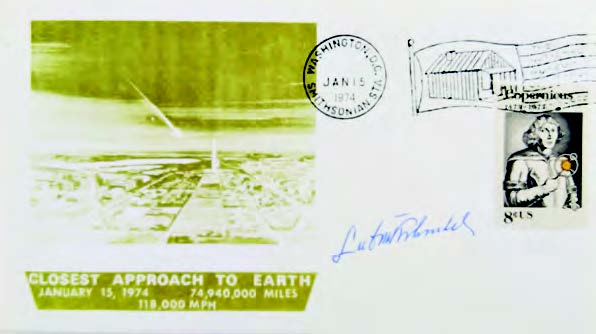
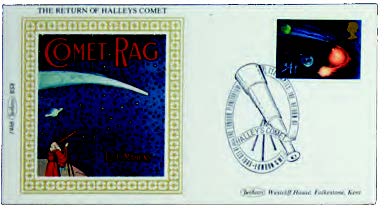
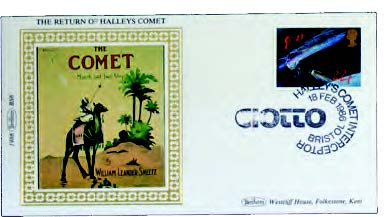
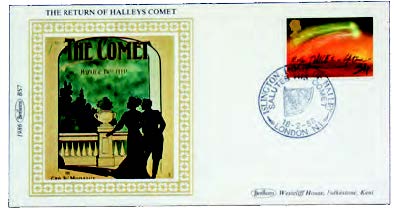
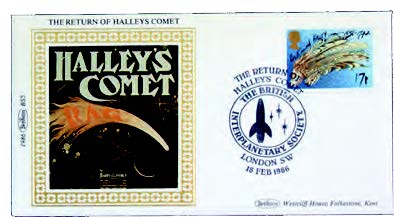
A set of four beautiful silk first day covers issued by Benham on the 18th February 1986 to celebrate the return of Halley’s comet. Halley’s comet is a short period comet and will appear again from mid-2061 to 2062.

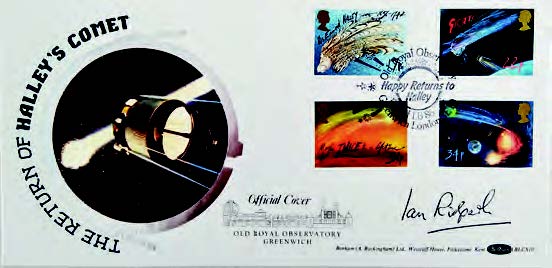
Ian Ridpath, astronomy writer and fellow philatelist delivered a talk about comets to the Cardiff Astronomical Society in 2019 and signed a Halley’s comet first day cover issued by Benham for my collection.
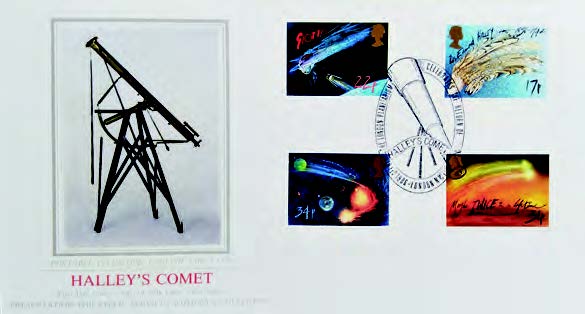
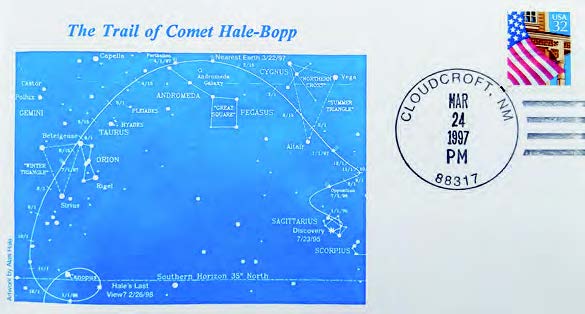
Gravitational Waves
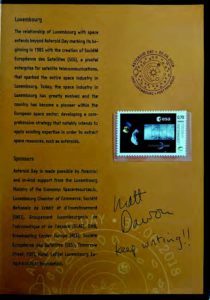
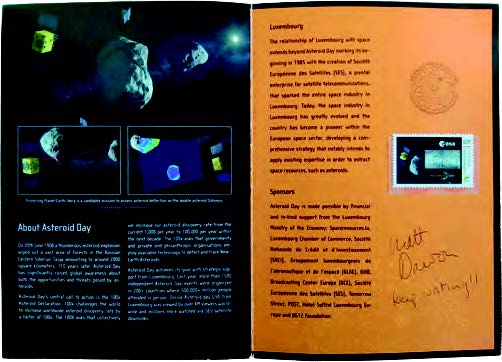
In 2018 and in co-operation with the European Space Agency and Asteroid Day, the Luxembourg Post issued a stamp depicting Heraa mission to Didymos, a double asteroid system. Matt Dawson gifted his booklet to me, which he signed during our meeting at the Royal Astronomical Society.
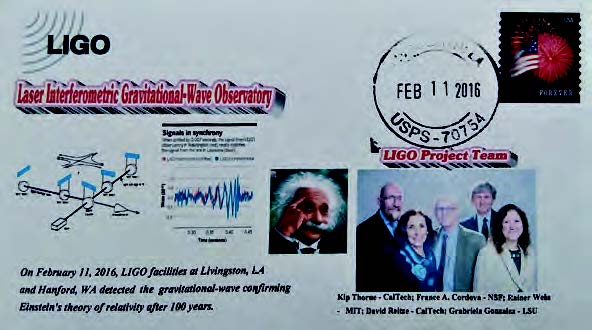
The Nobel Prize in Physics was awarded to Barry Barish, Rainer Weiss and Kip Thorne in 2017 for contributions to the Laser Interferometer Gravitational Wave Observatory (LIGO) detector and the observation of gravitational waves, ripples in space-time. This discovery confirmed one of Albert Einstein’s major predictions of his general theory of relativity.
LIGO detected the first-ever observation of gravitational waves on 14th September 2015. A homemade cover illustrating Albert Einstein and the LIGO project team was sent to me last year, date stamped on 11th February 2016 – the date that the public announcement of the detection of gravitational waves was made. I did not know then that a few months after receiving this cover, I would meet Kip Thorne, famous theoretical physicist in person!
Professor Thorne had just opened a new physics laboratory at Cardiff University and delivered a talk called ‘My Romance with the Warped Side of the Universe’, which I attended. Professor Bernard Schutz was also present, who I had recently interviewed for the Royal Astronomical Society, following the presentation of the Eddington Medal award to him for his work in gravitational waves.
I took with me the 100 Years of General Relativity first day cover which was issued by the Isle of Man post office on 1st July 2016. Announced at Starmus 2016, an international festival focussed on celebrating astronomy, six stamps illustrating black holes, gravitational waves and Hawking Radiation, along with two images of Albert Einstein and Stephen Hawking, are illustrated on the earthly coloured stamps ranging in value from 45p to £2.44. The pictures are printed on iridescent foil which really makes them unique and eye-catching. The cancellation is in silver ink and displays the names of Einstein and Hawking. Professor Thorne and Professor Schutz autographed the cover, forming an invaluable piece in my collection.
Philately provides no end of joy and wonder for me. Researching one stamp or postmark, autograph or cancellation has expanded my knowledge on subjects that I knew little about before. Learning and understanding the subject of the history of space flight and astronomy through collecting is unique and enjoyable, proving that the miniature world of philately can open a huge window on to our vast and beautiful Universe.
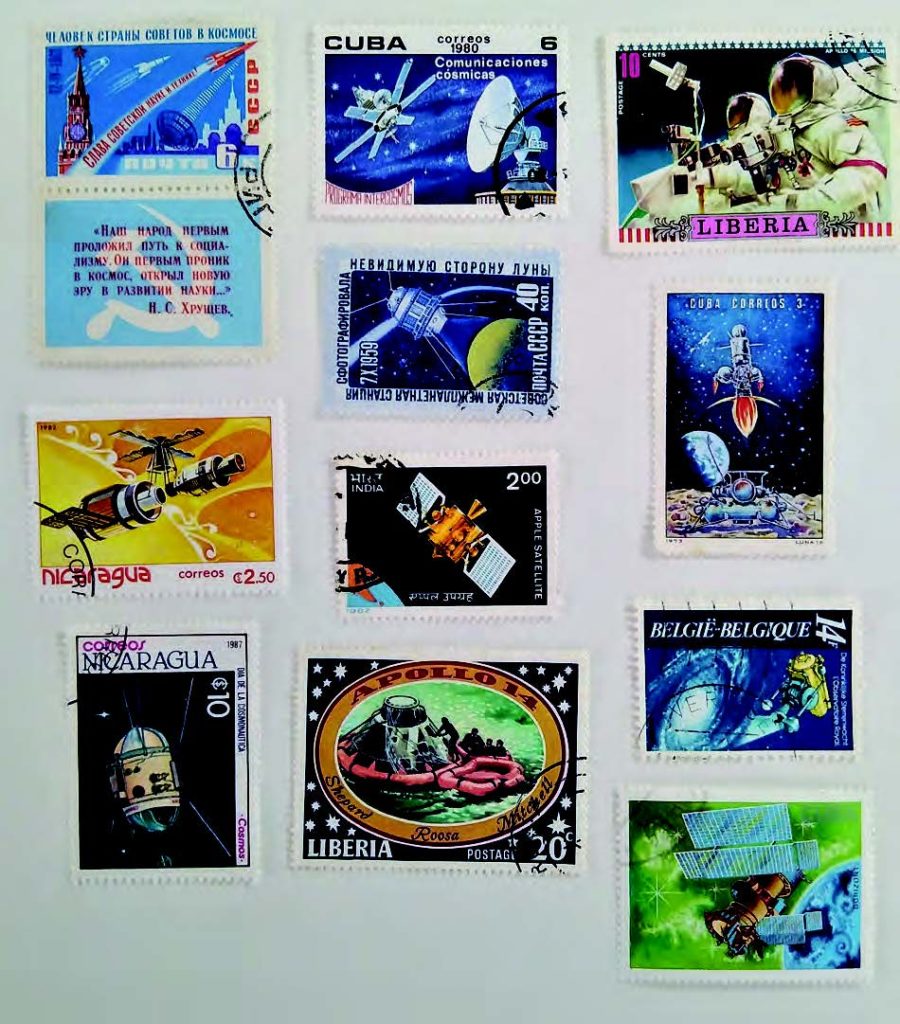
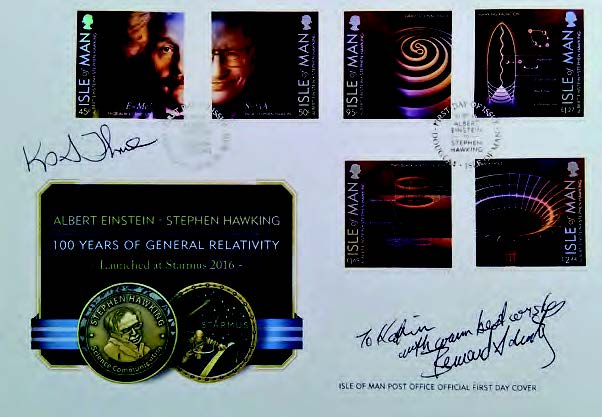
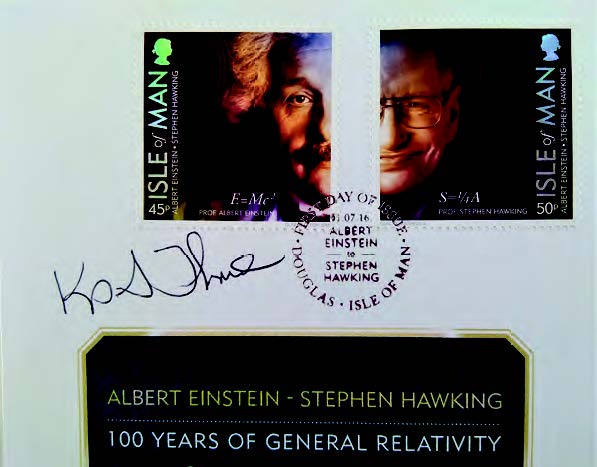
The wonderful stamps issued in 2016 to celebrate the centenary of Einstein’s General Theory of Relativity were affixed to first day covers. Professor Kip Thorne and Professor Bernard Schutz, both experts in the field of gravitational waves signed my cover.
About the author:
Katrin Raynor-Evans is a Fellow of the Royal Astronomical Society and Royal Geographical Society. She is a member of the European Astronomical Society and Astro Space Stamp Society. She writes articles and interviews for popular astronomy magazines including the BBC Sky at Night, and is the Features Editor for the Society for Popular Astronomy’s magazine, Popular Astronomy. She is co-authoring her first book and recently asteroid 446500 Katrinraynor was named after her. To contact Katrin please email her at [email protected].

